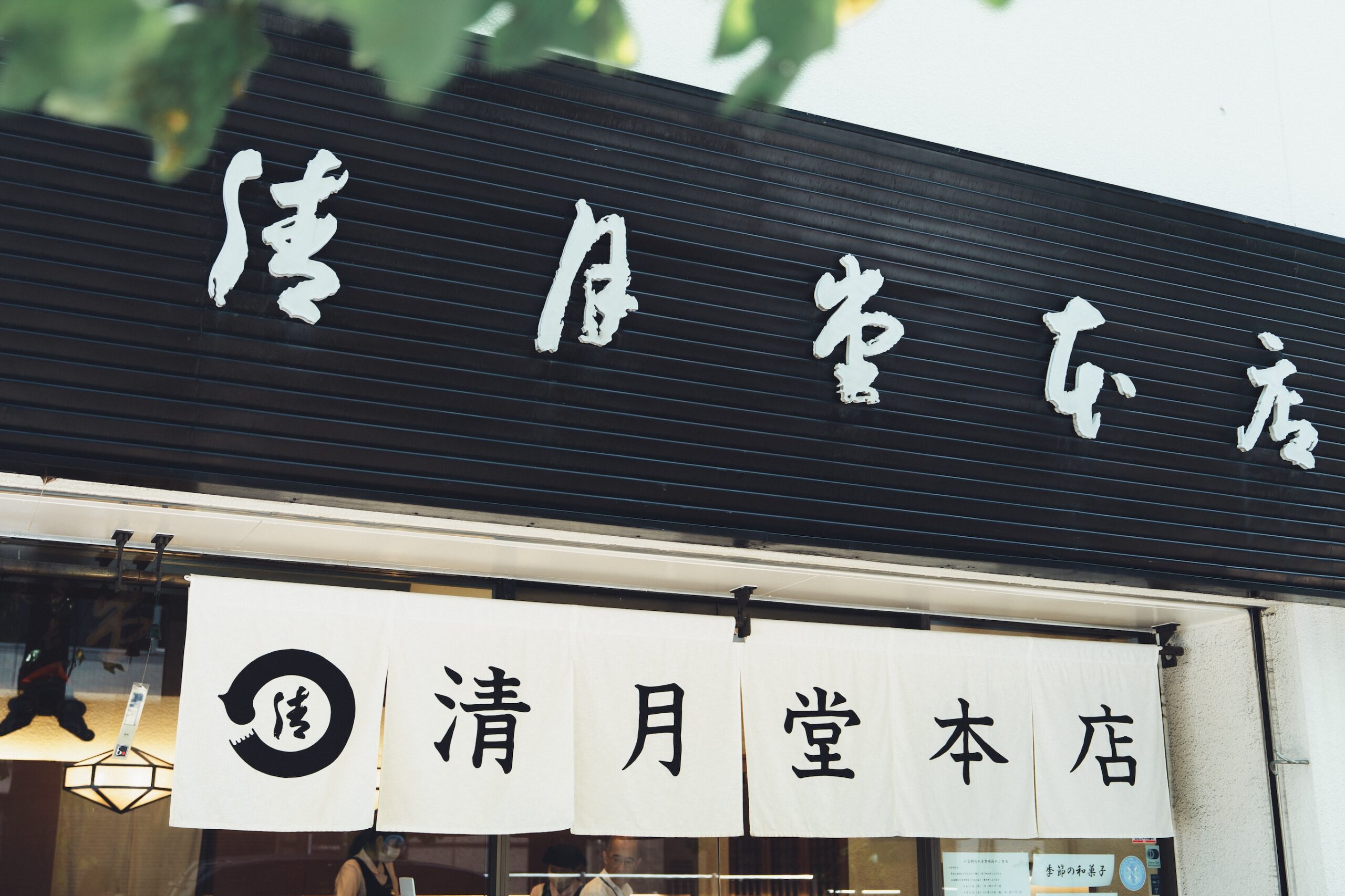CATEGORY
AREA

2025.09.02
More than 115 years of tradition—creating wagashi that evolve with the times under the spirit of “one generation, one sweet.”
 Nearest Station
Nearest Station
Founded in 1907 (Meiji 40) in Ginza 7-chome, “Seigetsudo Honten” has pursued flavors that reflect the times, guided by the philosophy of “ichidai ikka” (one generation, one sweet)—the idea that each generation creates a new wagashi. Its representative confection, Otoshibumi, is a delicate kimishigure (a steamed sweet made with egg yolk and bean paste) that reverses the usual form by placing yellow bean paste at the center. Another signature, the Aisatsu Monaka, features two hands clasping inside a heart, symbolizing human connection and embodying a contemporary vision for wagashi.
“Seigetsudo Honten” was founded in 1907 by its first proprietor from Kagoshima, who trained at the Nihonbashi shop “Mihashido” before opening his own store in Ginza 7-chome. At that time, Ginza was a district of traditional restaurants (ryotei), and the shop grew with the support of the local community, including proprietresses of those establishments.
Since its founding, the shop has upheld the philosophy of “ichidai ikka.” Each generation creates its own new wagashi, reflecting contemporary lifestyles and culture, always expanding the possibilities of Japanese confectionery.
The long-beloved Otoshibumi is a round, charming kimishigure sweet created by the third generation in the 1970s, in line with the “ichidai ikka” spirit. Unlike typical kimishigure, which places smooth red bean paste inside yellow bean paste, Otoshibumi reverses the structure, highlighting the flavor of the yellow bean paste.
The name comes from “Otoshibumi,” a kind of secret love letter in the Heian period, when a woman might secretly drop a rolled-up note of affection at the feet of her beloved. The sweet’s delicate, crumbly texture expresses this fleeting, dissolving feeling. With the expansion of railways and air travel in the Showa era, it gained popularity as a distinctly “Tokyo souvenir” and became the shop’s representative confection.
Following Otoshibumi, the shop’s latest signature confection is the Aisatsu Monaka, created by the 4th-generation proprietor. While earlier wagashi at Seigetsudo were inspired by the tea ceremony principle of conveying subtle feelings, modern times call for greater clarity. With wagashi becoming less familiar to many people, the 4th generation believed it important that their appearance and meaning be easy to understand. After many discussions with staff, the concept of wagashi as a medium for “connecting people” took shape.
The name “Aisatsu Monaka” and its design of two hands clasped within a heart make the giver’s feelings immediately visible. As a result, it has become a popular sweet for seasonal occasions of greeting, such as early spring and New Year.
Even as it creates new wagashi for modern times, “Seigetsudo Honten” continues to value simple confections that highlight the seasons and the natural character of ingredients. Azuki beans are carefully chosen for their stickiness, aroma, and flavor when made into bean paste, while eggs are delivered daily from designated Japanese farms. Such commitments to ingredients have been handed down through generations. “I want to create wagashi that can be passed on to future generations,” says the 4th-generation proprietor. This spirit ensures that Seigetsudo’s wagashi will continue to evolve.
The information contained this article was correct as of 09/02/2025 (the time of publication)